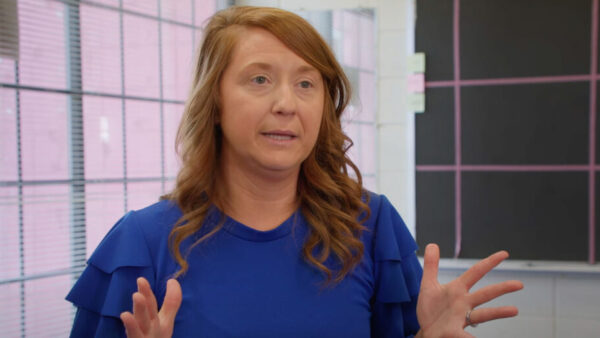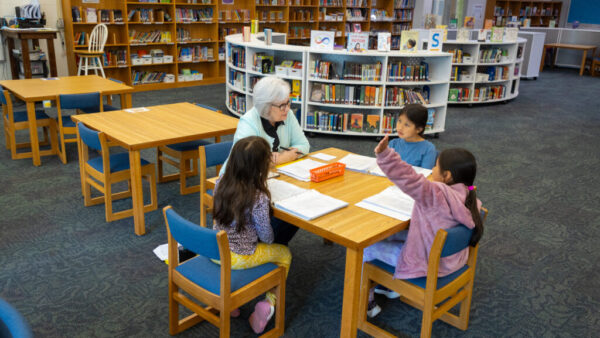The Solution to Education: Tutors, tests, coaches and summer school

RALEIGH, N.C. — The best way to help Lynn Pacos teach her first grade students to be proficient readers: “Staff, staff, staff.”
“We need that full-time [teaching assistant] in my room, there’s no question about it,” Pacos said during a visit to her Wildwood Forest Elementary School classroom.
She doesn’t have one. North Carolina cut funds for thousands of them years ago. And she needs one more than ever.
Students across the state have struggled during the past two years. The COVID-19 pandemic prompted school closures that lasted a year or longer for some students—forcing many to try to navigate virtual learning, sometimes in the absence of working parents. Some students with developmental delays weren’t able to get the same level of attention they might have received in person.
Many North Carolina students are several months behind in English language arts and many are almost a full school year behind in math, according to state testing data through spring 2021. Many students, though far fewer than typical, still tested at or above grade level last spring.
Many North Carolina students are several months behind in English language arts and many are almost a full school year behind in math, according to state testing data through spring 2021. Many students, though far fewer than typical, still tested at or above grade level last spring.
She’s among the army of tutors, learning coaches and behavioral health specialists who have been hired or contracted by local school systems to aid learning recovery. Schools are conducting before-school, after-school and summer learning programs.
The systems are ramping up testing student progress during the school year. They’re placing more students in their “multi-tiered systems of support” that are designed to determine the level of intervention students need, including disability services, according to a WRAL News review of federal stimulus package applications from 31 school systems in central and eastern North Carolina.
Together, the school systems have committed $356.1 million to the effort. That includes $43.1 million by the Wake County Public School System set aside to enlist people such as Poirer.
‘High-dosage tutoring’
This year’s first graders, at a critical age for learning to read, had never attended a full school year in a physical classroom until this year, even if they attended pre-school. That hurts the students academically and socially, and it’s often difficult for teachers to find time to focus on the latter struggle, Pacos says.
Poirier helps students who need more individual attention, while Pacos can stay focused on the rest of her class. It’s part of a research-based “high-dosage tutoring” model that requires frequent sessions with just one to three students at a time. It’s the model used by the North Carolina Education Corps, which employs Poirier and about 200 other tutors in two dozen school districts.
Pacos’ first-graders need small group work to become better readers. “They come in at so many different levels, that it’s very difficult to do whole group lessons with the children,” she said.
Students have long had differences in classroom progress and have always needed individualized approaches to their learning.
“That’s one of the things that makes teaching a difficult job,” said Kathleen A. Dawson, the deputy superintendent of Orange County Schools. But the disparities between students have broadened due to interruptions brought on by the pandemic.
“And although things are getting better, we still are dealing with a lot of challenges,” Dawson said. Staffing remains a challenge, as well as COVID-related absences. “Once we get past those hurdles,” she said, “we’ll be able to do better.”
Expanding workforce
TDurham Public Schools, with the $28 million it’s committed toward learning recovery so far, has hired or plans to hire 212 temporary workers with its federal funding, according to a district budget presentation. That includes 55 coaches devoted exclusively to speeding up the pace of student learning— “acceleration” in the parlance of educators.
Making a difference
Poirier became a tutor because she’s considering a career as a teacher. She applied in July and began working as a tutor in October, after some training on working with the students.

“I have seen so much growth already,” Poirier said. “It’s awesome, and I love to see it so much.”
The teachers Poirier works with give her guidance on what students need to work on and what benchmarks they want students to meet.
Some didn’t know how to read yet when Poirier started working with them. After some intensive tutoring, they caught on and can now read basic books for their grade level.
Pacos regrets what she can’t do during the school day. Students have more needs right now and teachers’ plates are full. The teaching assistants the school does have are pulled to cover classrooms as substitute teachers more often these days.
The school purchased a social-emotional learning curriculum that teaches children skills for listening, paying attention, controlling their behavior and getting along with others. “I can’t get to it most days,” Pacos said.
But Pacos says she’s glad to have someone like Poirier, for however long she’s able to help.
Learn more and hear the complete story at WRAL
Excerpted from Emily Walkenhorst, WRAL, Governor Cooper Highlights North Carolina Education Corps at Moore Magnet Elementary School in Forsyth County, Encourages People to



